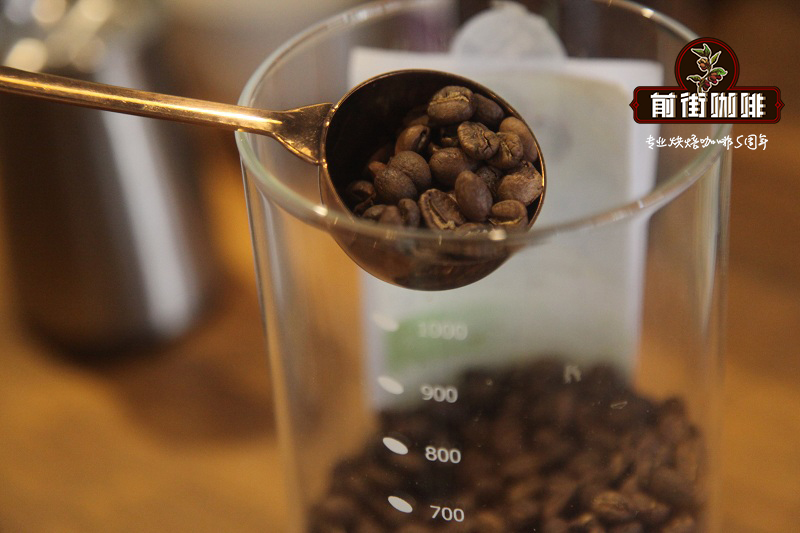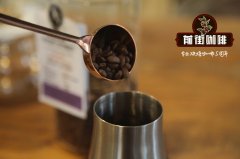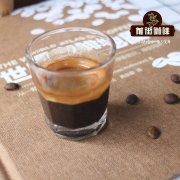Daquan, a local coffee brand in China, is the largest coffee brand in China Starbucks or Lucky?

Professional coffee knowledge exchange more coffee bean information please follow the coffee workshop (Wechat official account cafe_style)
Coffee is born with petty bourgeoisie feelings, but the "romantic" business of cafes is not easy to do, with high rent, high quality and low unit price.
But in the past two years, the smell of capital has gradually touched this business. In only 90 days from January to March this year, more than 15 investment institutions have entered the coffee industry, with news of financing for Internet coffee brands such as Luckin Coffee and Lian Coffee, as well as early financing for all kinds of coffee equipment such as coffee zero bar and friendly drinks.
Recently, Goldman Sachs published a special research report for a new coffee brand that has been operating for four months, pushing Luckin Coffee to the latest research "case spectrum" of the top investment bank. Capital is often the most sensitive sense of smell, from the conservative wait-and-see in the past to now waiting for the opportunity, the Chinese coffee market has entered a period of explosion?
When it comes to coffee, people's understanding of coffee shops comes to a large extent from Starbucks. Taking the global path of this overseas brand as a guide, let's take a look at how the coffee market in China will change today.
(by Qian Hao and Sun Xin)
Typesetting | Dafei
01
At that time, the rise of Starbucks, the "coffee empire"
What are the revelations?
In the past, the market capitalization of head channels could reach US $100 billion, while brands could reach US $10 billion, while Starbucks, as a brand, once reached a market capitalization of US $100 billion, which undoubtedly attracted great attention from capital.
From the outside, Starbucks benefited from the upgrading of US consumption at that time.
From 1970 to 1980, the per capita GDP of the United States rose from more than 5000 US dollars to more than 12000 US dollars, and exceeded 7000 US dollars for the first time in 1974. After the per capita income of residents has experienced rapid growth, there will be a greater degree of control, the so-called "warm thinking of lust", the subsequent demand and desire will continue to rise, this is the environment in which Starbucks grew up at that time.
If fast food such as McDonald's and Burger King represents "performance-to-price ratio", Starbucks represents "light extravagance", which coincides with the upgrading of American public consumption and the pursuit of high-quality products and service experience.
From an internal point of view, it has three core competencies of the whole industry chain.
[products] Starbucks has always attached importance to product research and development and innovation, has been in the forefront of the industry.
Starbucks always pursues excellence in quality and insists on providing customers with high-quality products. Its strict control in raw materials, from the transportation, roasting, preparation of coffee beans, must meet the most stringent standards. In addition, it also has more than 30 kinds of hand-made espresso and a variety of hot and cold coffee drinks, a variety of varieties, can fully cater to different tastes of consumers.
[channels] create standardized services, strictly check service experience and product quality, achieve cross-regional scale expansion, and then get rid of scattered coffee shops.
On the one hand, the main form of coffee products is brewing drinks, which is easy to operate and easy to achieve standardized production; on the other hand, Starbucks expands mainly in two modes: direct marketing and franchising, and has a strong control over franchise. as a result, it ensures a high degree of commodity standardization and consistent customer experience.
For example, whether in Seattle or Chicago, consumers cannot tell which stores are directly operated or franchised, and what they feel is a highly unified product and service experience. This makes it in the horse racing enclosure, rapid expansion at the same time, it can still ensure the service quality of the front end.
[brand] constantly strengthen brand positioning, shape brand image around values, and realize the strong relationship between people and brands.
Its CEO Schultz once said: "We are not in the coffee industry, but to provide services to customers." We are running the lives of our customers, and coffee is just a service. " Therefore, Starbucks brings an "affordable luxury" where students, truck drivers and CEO can find their own affordable coffee and enjoy the same comfortable environment and consumer experience.
02
Why do you say that?
Is there expected to be a local giant coffee brand in China today?
Compared with the rise of Starbucks, today's domestic market environment, technological development, business model innovation and other "elements" have gradually matured, laying the foundation for the rise of local coffee in the new era, and the opportunity to create a national "coffee kingdom" has come. Let's take Luckin Coffee, who has been in the limelight recently, as an example to disassemble it in detail.
First of all, enjoy the national dividend: the rapid rise of China's new middle class has promoted the rapid growth of coffee consumption.
According to the London International Coffee Organization, China's coffee consumption is growing at about 20% a year, nearly 10 times the world average. It shows that the strong consumption power of China's new middle class is constantly contributing to the rapid development of the coffee consumption industry.
Coffee consumption in China is increasing year by year.
In addition, the "2017-2021 China Coffee Industry Investment Analysis and Prospect Forecast report" also further confirms the opportunity. At present, the scale of the coffee consumption market is about 12 trillion yuan in the world, but it is only 70 billion yuan in China, and its penetration rate is far lower than the global average. It is estimated that in the next 10 years, China's coffee consumption market will exceed 1 trillion yuan, with great potential.
Secondly, with the upgrading of the business model, Luckin Coffee is well versed in Internet thinking and emphasizes people-oriented.
Behind it is the jump from supply-side thinking to demand-side thinking, making the supply chain adapt around the needs of users. Founder Qian Zhiya was once a COO of Shenzhou excellent car, with strong Internet genes, good at "agile iterative" methodology, relying on user consumption data feedback, constantly around the taste that users like, iteratively optimizing the product and service experience.
It is worth mentioning that it is well aware of the new logic from "people looking for coffee" to "finding people for coffee" in the new retail environment.
In the past, traditional coffee was "store-centric" to meet people's offline coffee consumption and social needs. The core of the competition was store location, coffee production technology, brand building and other factors. Nowadays, under the "fast food" city life, the time cost of queuing up to buy a cup of coffee at Starbucks is not low, and there are plenty of people who just want to buy a cup of coffee.
Lucky "grows up" in Internet thinking, which, unlike traditional cafes, challenges Starbucks' classic third space theory, believing that the so-called social space and scene not only exist in physical space, because "social interaction between people will occur more on the mobile Internet."
Based on this, Rui Xing pays more attention to "people-oriented", reconstructs around "time, place and interpersonal relationship", constructs a new consumption scene between business and consumers, realizes "coffee to find people" and immediately delivers to the door.
Finally, the "magic" of the times is Luckin Coffee's golden spoon: today is big data and the mobile Internet era, technology enabling brand, will enhance the efficiency and experience of all aspects of the industrial chain.
The times are the natural catalyst. Nowadays, Luckin Coffee has great potential to enhance his products, channels and brands. If he does better, he must have the opportunity to overtake at the bend.
[products] Ruixing is not only elaborately crafted in coffee manufacturing, but also with the help of big data, the Internet and other technological advantages, in-depth analysis of user needs, optimization of supply chain, rapid iteration to achieve dimensionality reduction of traditional brands.
Luckin Coffee's product advantages
In the traditional coffee model, the insight into the needs of users can only rely on experience and third-party research, lack of scientific and systematic tools. In terms of strategic choice, Lucky intends to guide users to order with App, the core of which is to digitize users' consumption behavior and lay the foundation for subsequent accurate data operation and product optimization:
It is understood that lucky put more than 100 groups of labels on user behavior, such as consumption frequency, location, taste preference and so on. When the front-end consumer behavior is no longer model, it will feed the entire back-end supply chain, warehousing logistics and other operational links, so that Luckin Coffee's iterative speed and accuracy far exceed the traditional model.
For example, when thinking about the law of local dispatch, whether to increase or reduce stores, whether stores should increase inventory management such as coffee machines, cups, cup covers, sugar, and so on, the efficiency of decision-making will be greatly optimized.
[channels] the new retail has reconstructed the personnel and goods yard, and from the perspective of Lucky's channel layout, it has made a full scene coverage around white-collar workers. There are not only offline store scenes close to the target population to meet offline experience and social needs, but also convenient access to coffee with the help of logistics and distribution in the same city.
According to the Goldman Sachs report, Luckin Coffee, who has been online for only half a year, has surpassed Costa in the number of stores and ranked second in the industry. The rate of progress is amazing. At the same time, 84% of its stores in the Beijing area are located in office buildings and business centers, and 16% in universities. The essence is to accurately lay out the recent consumption scene around the white-collar crowd.
Comparison of the current situation of Chinese mainland chain drinks
Luckin Coffee and the age composition of Starbucks coffee consumers
On the other hand, the development of domestic logistics infrastructure enables Lucky to provide users with a convenient experience at a lower cost.
According to Manpower Group, Chinese between the ages of 20 and 34 rank third in the world in their daily working hours. In this case, people undoubtedly pay more attention to efficiency and want products to be delivered easily and save time.
It is worth mentioning that the population density of China in business and residential areas is much higher than that of the United States and other developed countries, and its distribution efficiency and speed are bound to be higher. This enables the brand to provide the ultimate distribution service at a very low performance cost.
According to the Goldman Sachs report, in China, the price and freight of each takeout order is only 1can4 of that of the United States, but the delivery time is 13 minutes less than that of the United States, and the cost and efficiency advantages are self-evident, making it possible for Lucky to find someone for coffee.
Cost comparison between Chinese and American takeout Industry
[brand] two-wheel drive online and offline, Ruixing grasps the communication lifeline of the rapid fission of the brand.
Today, the whole advertising channel is becoming more and more scattered and diversified, and brand delivery pays more attention to effect orientation. Lucky has insight into this trend and realizes saturated marketing with the help of more efficient access channels such as elevators and cinemas offline. Strong access to the target user.
The growth of each advertising channel and the time distribution of users watching advertisements.
Online, it also keenly perceives Wechat Internet dividends, opening up users' social relationship chain, enabling low-cost and rapid access to traffic and viral growth.
As a typical social drink, coffee has a very strong communication attribute. Through the subsidy to users, it will stimulate old users to share the motivation of good friends to get customers, so as to achieve efficient marketing fission. Through activities such as free first order, buy 5 get 5 free, and bring the old with the new, Ruixing completed the cold start in a very short time. The statistical results of Aurora big data show that since the beginning of this year, Luckin Coffee's application market penetration has been rising rapidly.
Lucky's omni-directional upgrade through products, channels and brands is also the key reason why Goldman will take it as the latest research case.
04
Conclusion
The big cake in China's coffee market is not yet fully "ripe", but the aroma is overflowing. Today, China is enjoying better "soil" opportunities than the United States. Whether Rui Xing can build China's "coffee kingdom" remains to be seen.
END
Important Notice :
前街咖啡 FrontStreet Coffee has moved to new addredd:
FrontStreet Coffee Address: 315,Donghua East Road,GuangZhou
Tel:020 38364473
- Prev

How do robusta coffee beans taste? are robusta coffee beans really rubbish?
Professional coffee knowledge exchange more coffee bean information please follow the coffee workshop (Wechat official account cafe_style) the largest proportion of coffee beans in the world, one is Arabica, the other is Robusta. The debate about the merits of Arabica and Robusta has never stopped. Just like at home, Robusta's reputation is obviously not as good as Elaraby's.
- Next

Is imported coffee good or domestic? What brands of coffee belong to domestic?
Professional coffee knowledge exchange More coffee bean information Please pay attention to coffee workshop (Weixin Official Accounts cafe_style) as an imported product, in the eyes of Chinese consumers there is a first cause concept: imported is authentic. To judge whether this view is true or false, you need to understand the basics of coffee cultivation first. Coffee production is mainly distributed on both sides of the Earth's equator to the Tropic of Cancer between the north and south,
Related
- Beginners will see the "Coffee pull flower" guide!
- What is the difference between ice blog purified milk and ordinary milk coffee?
- Why is the Philippines the largest producer of crops in Liberia?
- For coffee extraction, should the fine powder be retained?
- How does extracted espresso fill pressed powder? How much strength does it take to press the powder?
- How to make jasmine cold extract coffee? Is the jasmine + latte good?
- Will this little toy really make the coffee taste better? How does Lily Drip affect coffee extraction?
- Will the action of slapping the filter cup also affect coffee extraction?
- What's the difference between powder-to-water ratio and powder-to-liquid ratio?
- What is the Ethiopian local species? What does it have to do with Heirloom native species?

